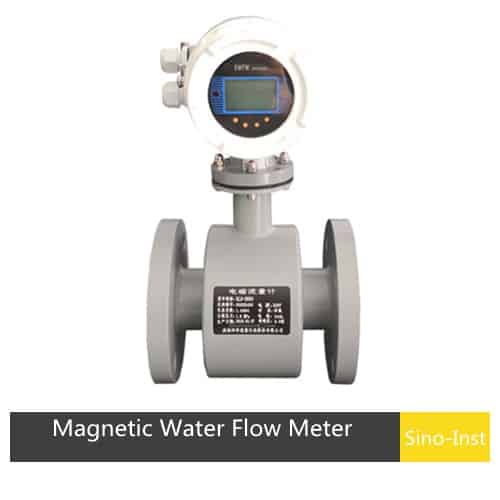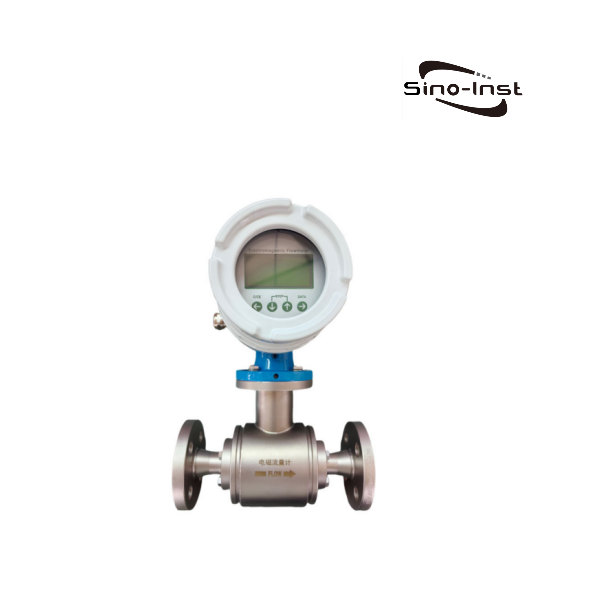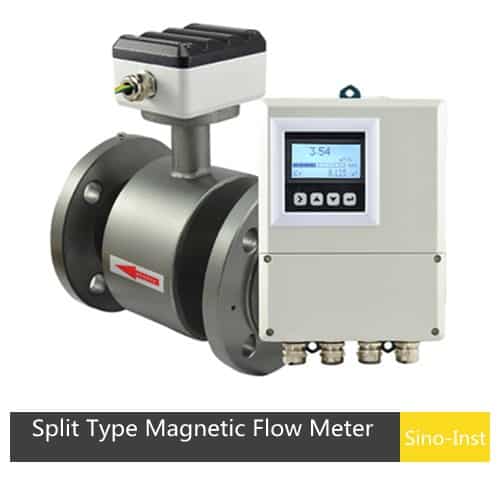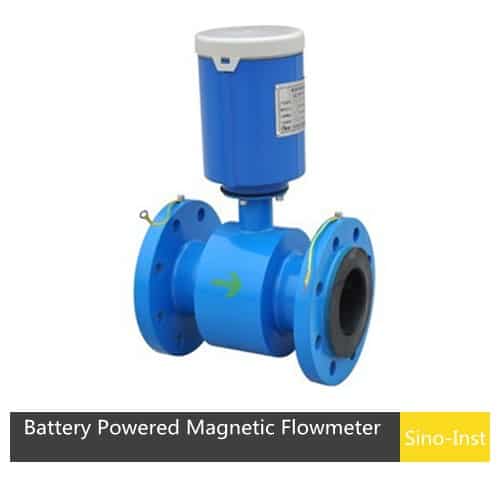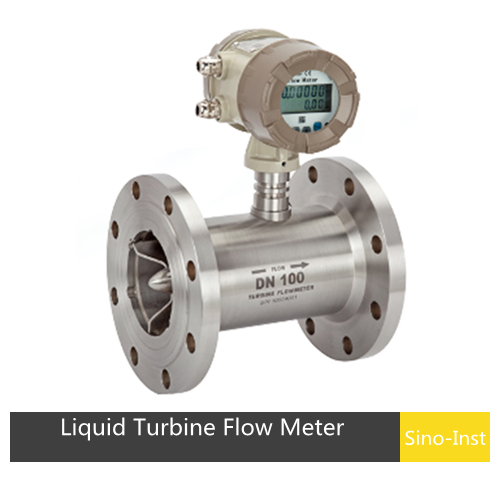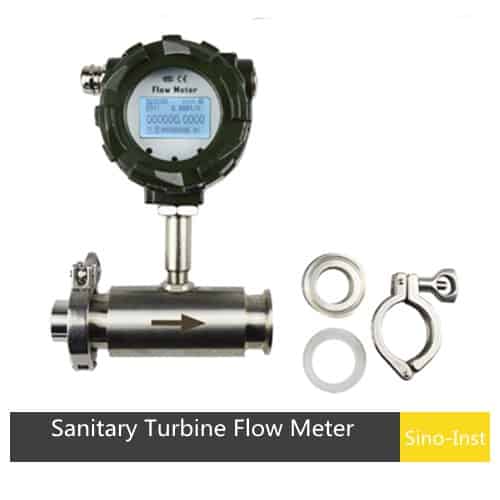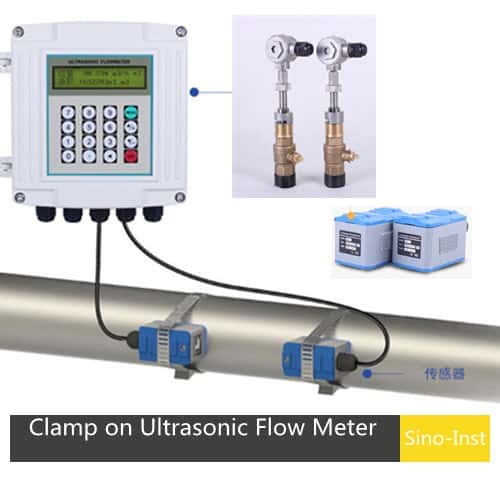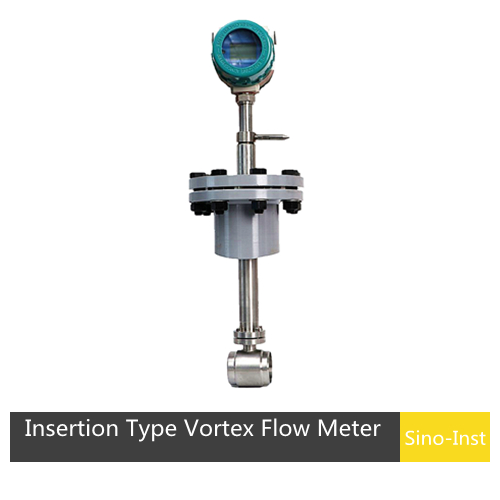
Drinking water is possibly the most widely acknowledged and regulated water type measured by flow meters. The water is typically treated in a municipal water treatment plant, and from there, it flows through a network of pipes to homes, businesses, and other set-ups.
Flow meters in drinking water systems ensure that the correct amount of water is delivered while minimizing waste, leakage, and energy consumption.
This blog post explores the importance of potable water flow meters, the different types available in the market, especially from our company Sino-Inst, and their applications in domestic water systems.
Potable Water Flow Meter
Potable Water Flow Meter is a device used to measure the amount of drinking water flowing through a pipe. It is suitable for water wells, water delivery area metering (DMA) and drinking water custody transfer level measurement. Unlike traditional mechanical water meters, drinking water flow meters can display single instantaneous flow, as well as cumulative flow, and support signal output. It is convenient for automated integrated monitoring of drinking water flow.
Domestic Water Flow Meter: What is its significance?
- Tracking Consumption: Homeowners can monitor their water usage to adopt conservation practices.
- Leak Spotting: Anomalies in readings can help detect leaks early, preventing wastage and high water bills.
- Clean Billing: Accurate measurement ensures that users are billed only for the water they consume.
- Regulatory Conformity: Many jurisdictions require water meters to track household water usage.
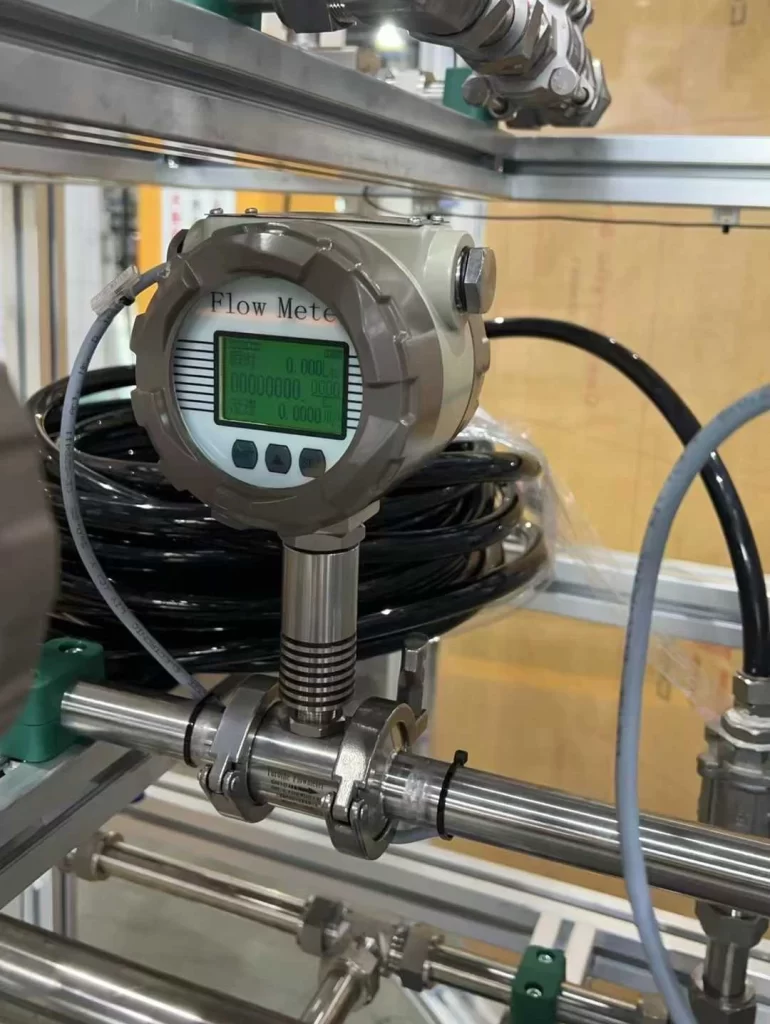
Types of Potable Water Flow Meters
Various types of Potable Water Flow Meters are available, each with unique features suited for different applications. The most common types include:
- Turbine Water Flow Meters
These use a spinning turbine to measure water flow and are suitable for larger flow rates. Insertion Turbine meters with stainless steel wetted parts are used as potable Water Flow Meters. - Ultrasonic Water Flow Meters
Ultrasonic water meters use sound waves to measure water velocity. They are highly accurate and have no moving parts, making them durable and low-maintenance. These meters come in two types:
- Transit-Time Ultrasonic Meters: These meters measure the time difference between upstream and downstream sound waves.
- Doppler Ultrasonic Meters: Use frequency shifts to determine water flow velocity.
- Electromagnetic Water Flow Meters
Electromagnetic meters, or mag meters, work on the law of electromagnetic induction. They are perfect for utilization where high accuracy and reliability are needed. These meters need a conductive liquid, making them error less for potable water applications.
Featured Potable Water Flow Meters for Sale
Sino-Inst’s potable water flow meters offer versatile, accurate flow measurement used in facilities across the globe.
Selecting the Right Drinking Water Flow Meter: Factors to Consider
Applications of Domestic Flow Meters
- Remote monitoring of municipal water supply and water distribution networks;
- Water consumption and financial settlement (custodial transfer);
- Irrigation water and abstracted water;
- Water treatment;
- Replacement of mechanical turbine meters;
- Leak detection;
- Inspection of pumps and wells;
- Custody transfer flow measurement in district heating networks;
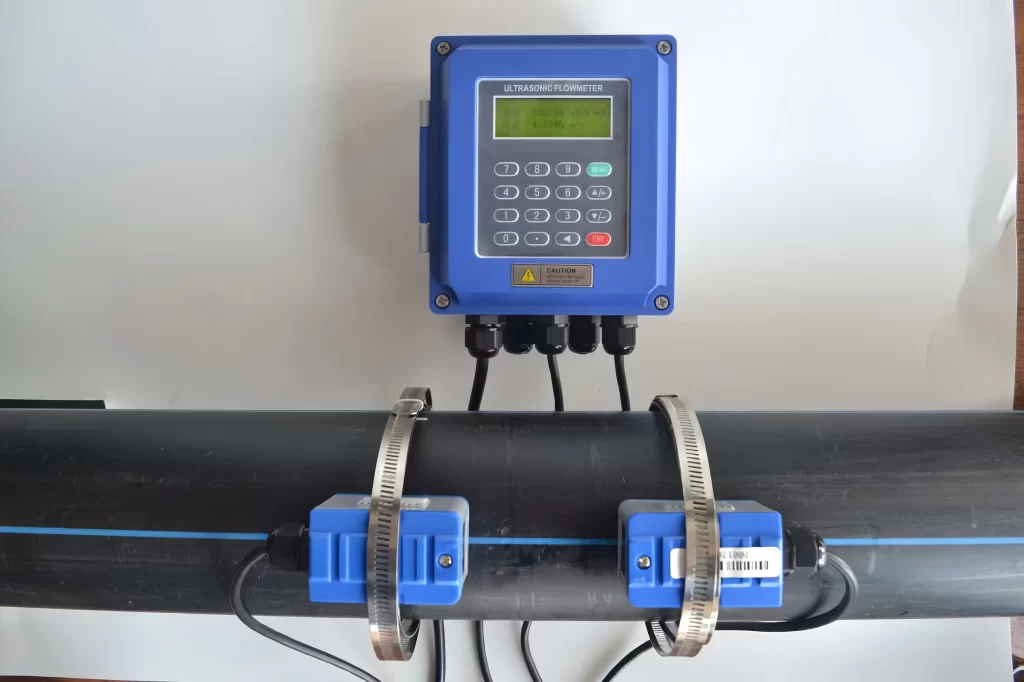
What is the difference between a water meter and a water flow meter?
Water meters and flow meters are both measuring instruments used for trade settlement between water supply enterprises and users. Water meters and flow meters are two products that implement different standards. The two also have different focuses.
Measurement parameters
Flow meters focus on measuring process quantities, such as flow rate and instantaneous flow. They are mostly used in situations where flow rate needs to be controlled, and do not focus on calculating cumulative flow.
Water meters mainly measure cumulative quantities, such as cumulative water volume. They are cumulative metering instruments, and typical mechanical water meters can only read cumulative volume.
Measurement accuracy
The accuracy of flow meters is relatively high, and the maximum allowable error is usually between ±0.1% and ±1%. The accuracy of water meters is generally ±2%, ±3%, and some may reach ±1%.
Flow meters are usually used in places where high measurement accuracy is required, such as factory water metering, and their calibers are generally large. Water meters are more commonly used in water supply networks and pipe ends of DN300 and below to meet the measurement needs of household and small-scale water consumption.
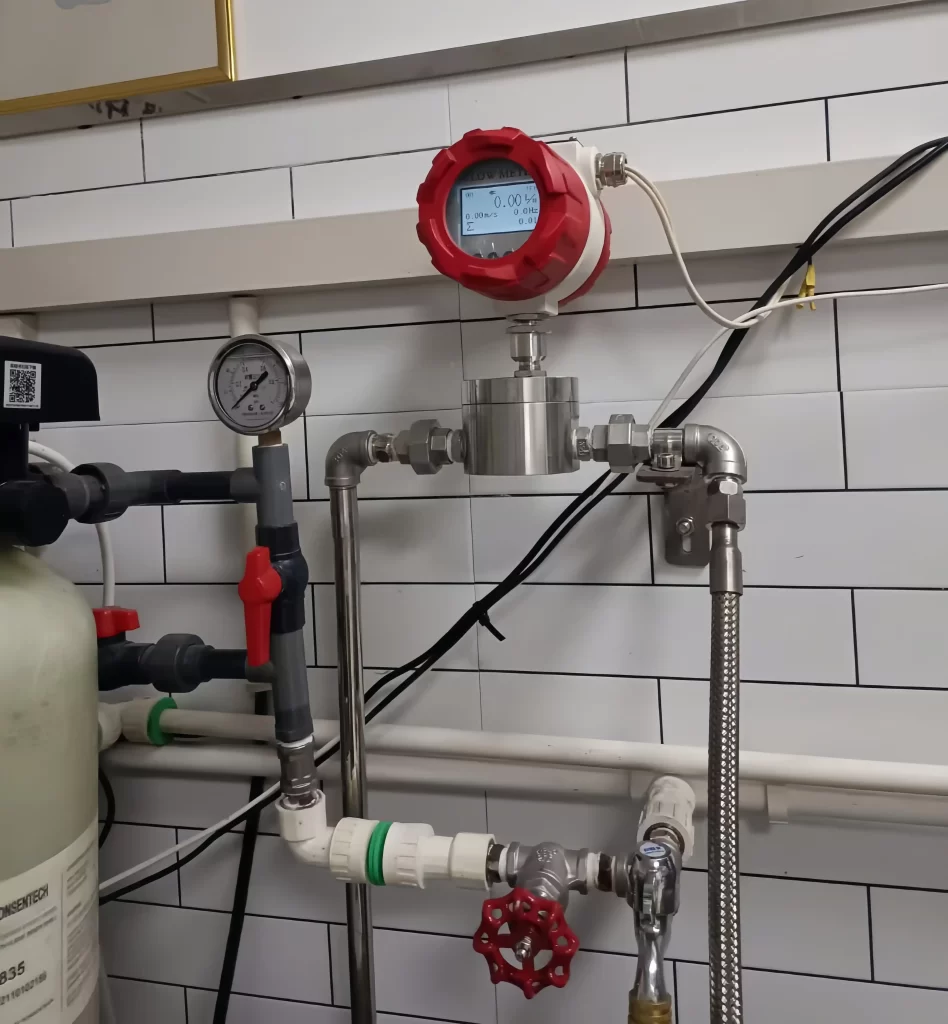
Measurement range
The flow meter can measure in the range of 0.1 to 10 (m/s). Different meters are selected according to the actual use range and accuracy requirements. The flow meter with flow points set on the water meter calibration table has a very narrow measurement range. For example, the flow meter installed on the pipe for calibrating the common flow rate generally has a measurement range of 1 to 5 m/s. The flow meter installed on the pipe for calibrating the boundary flow rate can only measure in the range of 0.01 to 0.05 m/s, and the accuracy is generally ±0.1%.
The measurement range of the water meter is generally between 0.02 and 4 m/s. Most of the time, the measured flow rate is less than 2 m/s.
Application scenarios
Flow meters are generally used in places with high accuracy requirements and have larger calibers. For example, the accuracy of factory water metering is generally less than or equal to 0.5, and the caliber is also greater than DN300.
Water meters are generally used in water supply networks and pipe ends of DN300 and below.
Supervision and Management Measures
Our State Administration for Market Regulation has different management measures for water meters and flow meters:
The water meter must be inspected at a diameter of DN15 to DN50;
The flow meter must be inspected at a diameter of DN300 or below.
More Flow Measurement Solutions
- The Right Saltwater And Seawater Flow Meter For Your Needs
- Guide for Raw Water And Fresh Water Flow Meters
- Electromagnetic Interference Resistant Flow Meters
- Helical Flow Meters: Accurate Flow Measurement For Challenging Applications
- Bitumen And Asphalt Level Meters: Let’s Learn More About Them
- Rotary Flow Meters for More Stable Measurement and Control Systems
- Fertilizer Flow Monitoring: Liquid Fertilizer Flow Meters
- Calorimetric Flow Meter: An Economical Solution For Hot Water Flow Measurement
- Knowing Paint Flow Meters – Choose the Right One!
The origin of drinking water usually starts from wells, reservoirs, and large tanks. Large diameter pipes carry the extracted water and transfer it to the local distribution system.
Therefore, Potable water flow meters usually need to be suitable for large diameter pipes, such as 6 inch, 4 inch, and 3 inch. Of course, 2-inch and 1-inch pipe flow meters are also very common.
A potable water flow meter is a necessary tool for managing water consumption efficiently. As technology continues to develop, smart meters and IoT-enabled solutions will further improve the way we monitor and control our water usage. Investing in the right drinking water flow meter today can lead to significant profits in the future.
-1.jpg)
